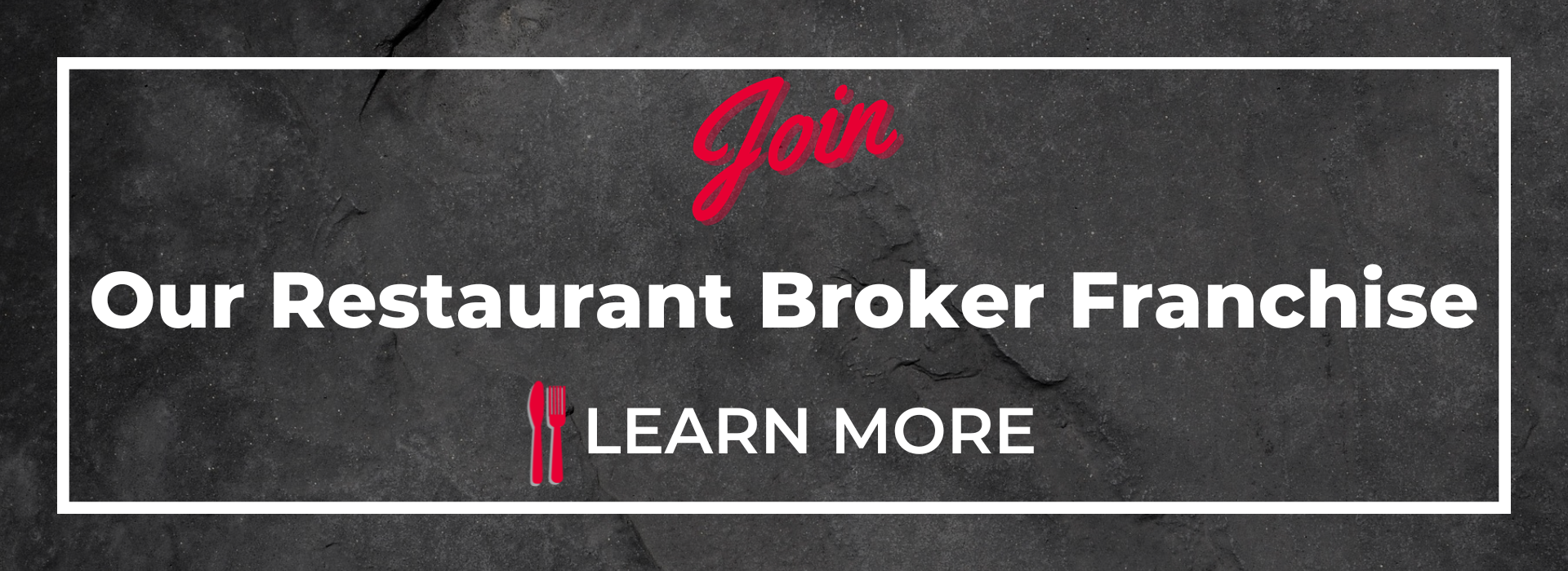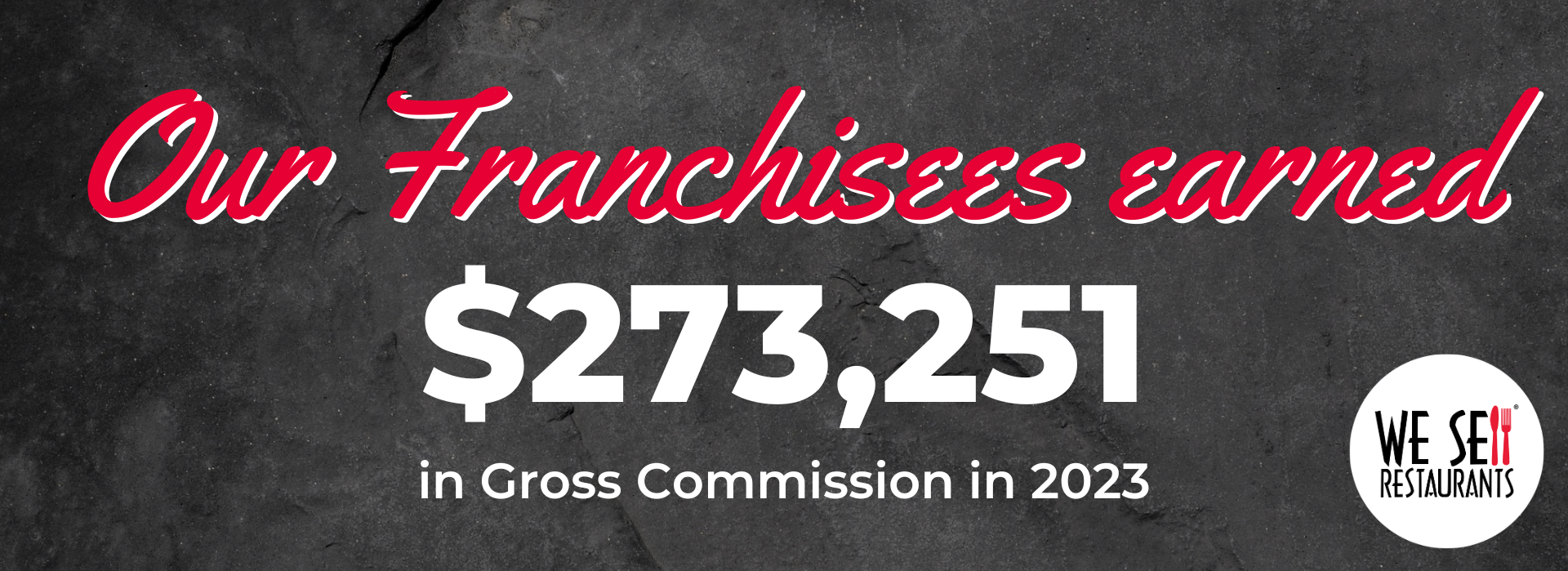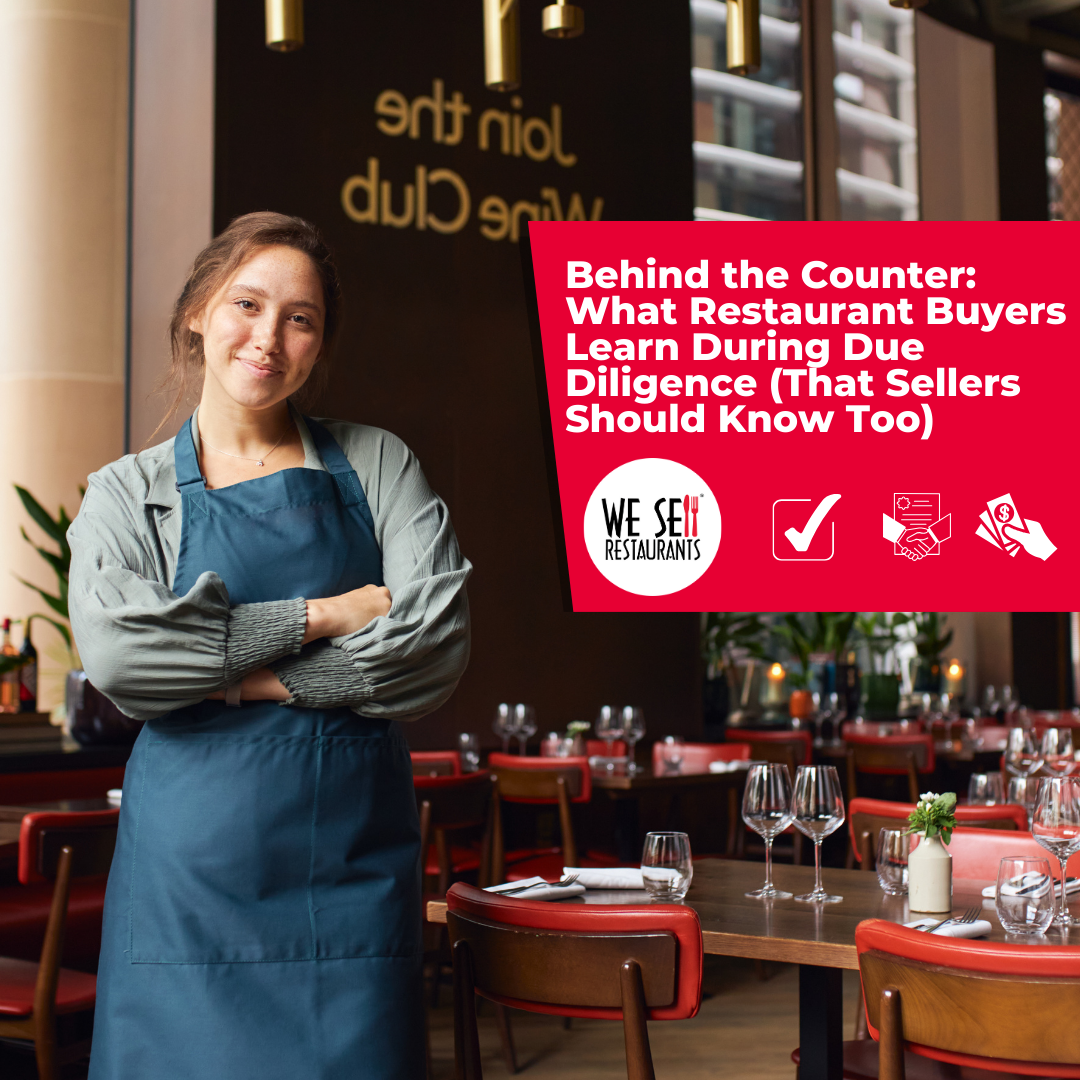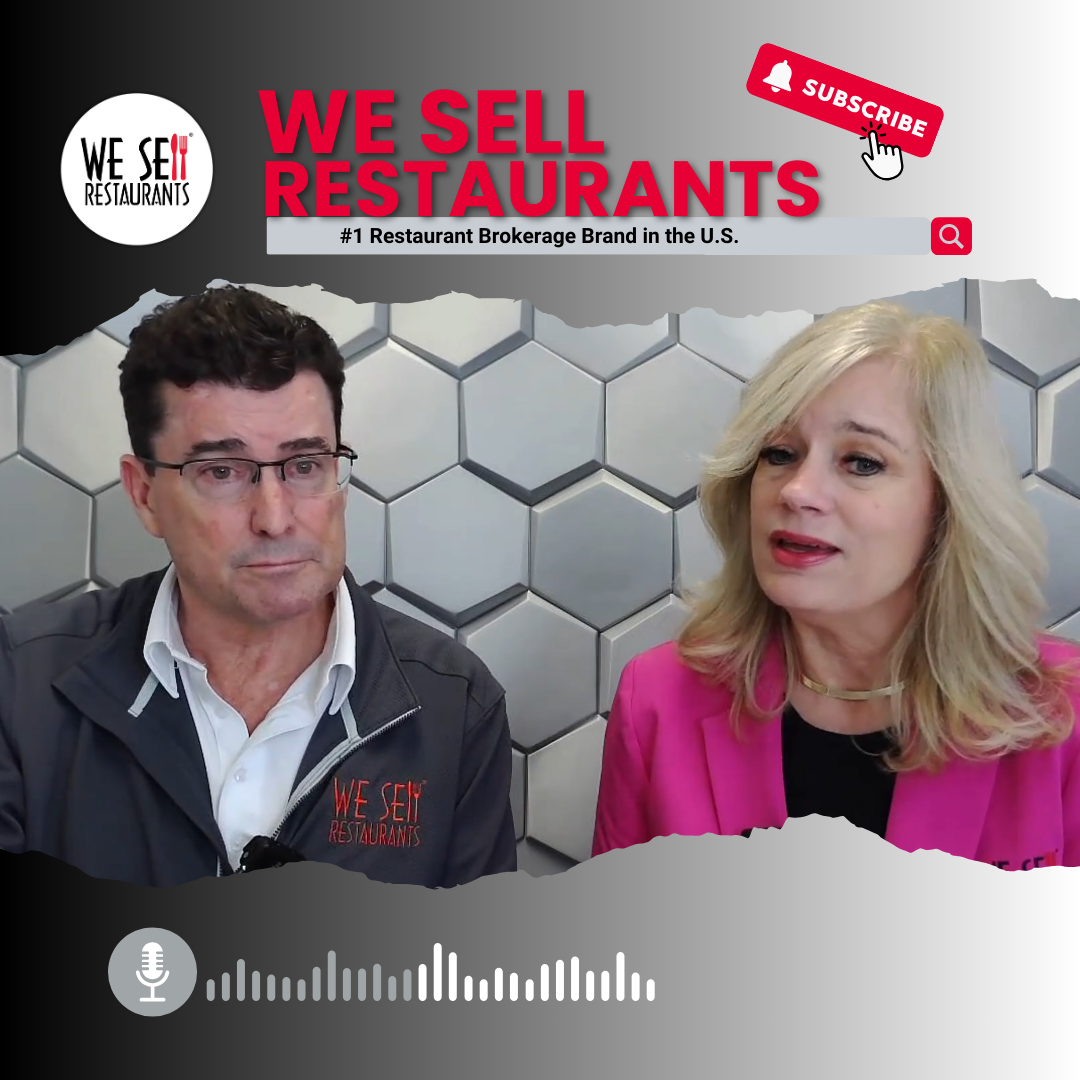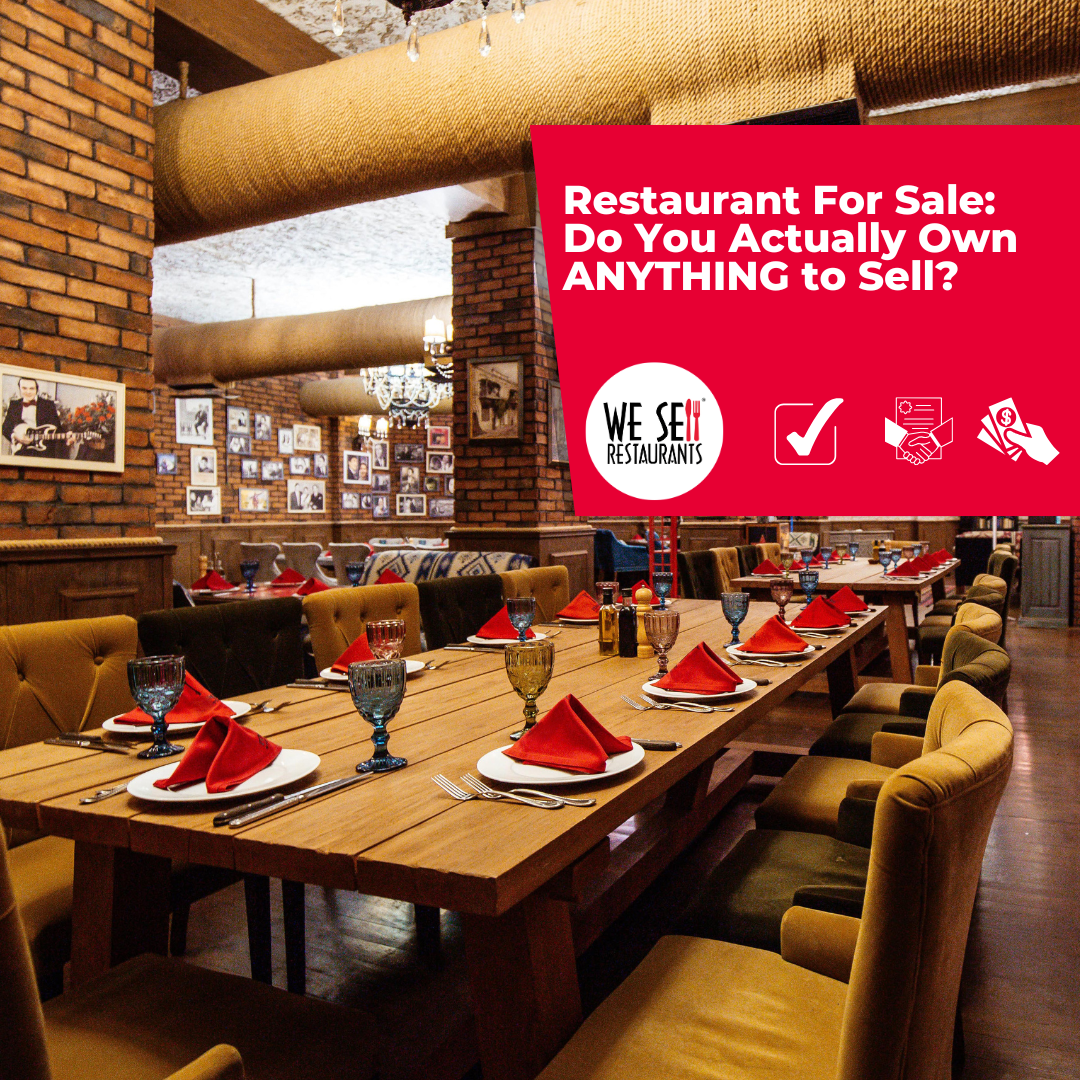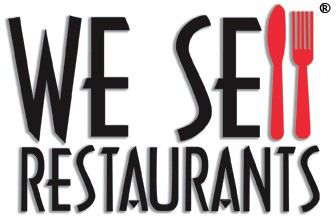The restaurant industry is evolving rapidly and We Sell Restaurants is at the forefront of that transformation. The National Restaurant Association’s 2025 State of the Industry report shows a continuing preference for convenience and off-premise dining, a trend that surged during the pandemic and shows no signs of slowing. To meet this demand, traditional restaurant models are evolving, and CloudKitchens—also known as ghost kitchens, dark kitchens, or virtual kitchens—have emerged as a game-changing solution. These streamlined facilities allow operators to launch or scale a delivery-focused food business without the high costs and complexity of a traditional restaurant.
That’s not their only use however. Franchise restaurants that are sold but not yet open are jumping on the opportunity for early launches in the market using Cloudkitchens to offer their food online before the physical store is built. Chefs with concepts they want to test are also taking advantage of short-term leases to go beyond a “popup” restaurant and begin offering a menu where they can see results in online orders. For restaurants that are trying to balance heavy demands on their kitchens, they are offloading all their delivery through these off-premise locations, keeping quality high and allowing for a separate team staffed and ready to service just the takeout menu to handle the specialized need for speed without sacrificing the dine in experience for those seated at tables.
Whether you’re launching a new brand, testing a concept, or expanding your delivery capacity, leasing a CloudKitchen can be a game changer. This ultimate guide to Cloudkitchens by We Sell Restaurants explains what they are, why they’re growing in popularity, and how to lease one. We’ll also cover key reasons operators choose this model, beyond the obvious cost savings and speed to market.
What is a CloudKitchen?
A CloudKitchen is a purpose-built commercial kitchen facility designed exclusively for preparing food for delivery and takeout. Unlike traditional restaurants, CloudKitchens eliminate the need for a dining area, front-of-house staff, and expensive décor. Instead, they provide operators with fully equipped private kitchen suites, optimized for high-volume production in a controlled, efficient environment.
CloudKitchens, pioneered by the company of the same name (founded by former Uber CEO Travis Kalanick), are strategically located in high-demand urban areas to optimize delivery within a certain defined radius. They provide turnkey solutions, including infrastructure, utilities, and tech integrations, so operators can focus on cooking and branding rather than managing real estate or equipment.
Features will meet all local requirements for food service permits and typically include:
- Commercial-grade infrastructure with hoods and ventilation
- Three-compartment sinks and sanitation systems
- Utilities (water, power, gas) included in the lease
- Secure storage for dry, refrigerated, and frozen goods
- Dedicated driver pick-up zones with touchless lockers
- Optional robotic runners for order handoff
- Local support teams and on-site managers
The result? Turnkey solutions that allow restaurants to open quickly, operate efficiently, and scale without the traditional risk and cost of building out a full-service location.
Why CloudKitchens Are Booming
The rise of delivery apps like DoorDash, Uber Eats, and Grubhub has transformed how customers interact with restaurants. Today, off-premise dining accounts for as much as 75% of restaurant sales in many segments and third-party delivery revenue is projected to reach $200 billion globally by 2030.
Restaurants that fail to adapt risk being left behind. CloudKitchens give operators a way to tap into this growing demand without heavy investment, making them one of the fastest-growing models in the industry.
Here’s why they’re becoming a go-to choice for restaurateurs:
- Lower Startup Costs: Traditional restaurants require significant investment in real estate, interior design, and front-of-house staff. CloudKitchens eliminate these expenses, with leasing costs often 50-70% lower than traditional restaurant spaces.
- Faster Time to Market: Leasing a CloudKitchen can take as little as a few weeks, compared to months or even a year for a traditional restaurant. Pre-equipped kitchens and streamlined permitting processes mean you can start cooking almost immediately.
- Scalability and Flexibility: CloudKitchens allow operators to test new concepts with minimal risk. You can launch multiple brands from a single kitchen, pivot menus based on demand, or scale to new locations without long-term leases.
- Delivery-First Designs: With built-in integrations for delivery platforms and data analytics, CloudKitchens help operators maximize efficiency and customer reach. Many facilities offer real-time insights into order trends, enabling data-driven decisions. They are built with touchless lockers to handle the pickup of food and keep it moving through the delivery cycle reducing complexities, lowering wait times and improving customer satisfaction.
- Reduced Operational Complexity: By focusing solely on food preparation and delivery, operators avoid the challenges of managing dine-in experiences, such as seating, ambiance, and front-of-house staff.
- Sustainability and Efficiency: Shared facilities reduce energy and resource waste, and centralized locations minimize delivery distances, aligning with eco-conscious consumer preferences.
Additional Reasons to Consider a CloudKitchen
Beyond the common benefits, here are some strategic scenarios where leasing a CloudKitchen makes sense:
You Bought a Franchise but Are Waiting on a Build-Out
Construction delays are common in today’s market. From permitting issues to supply chain disruptions, opening a full-service location can take months longer than expected. A CloudKitchen allows you to get to market now while your permanent space is in progress. This means:
- The franchisor moves those sold but not open units off their books
- The owner and franchise start generating revenue sooner.
- You are able to get your staff trained in real-world conditions.
- You can build brand awareness and customer loyalty before your grand opening.
You Own a Restaurant but Struggle to Keep up with Delivery
If your dine-in restaurant is struggling to manage both in-house service and delivery orders, quality can suffer. By leasing a CloudKitchen, you can separate delivery operations from the main kitchen, allowing your staff to:
- Focus on dine-in guests for a better on-site experience.
- Maintain quality control for delivery orders in a controlled, dedicated environment.
- Improve operational flow and reduce stress on your existing team.
Brands like Starbucks have moved almost all fulfillment for delivery order offsite to improve efficiency, increase speed of service, and provide better experiences for both consumers dining in and those ordering out. There is nothing more frustrating to a dine in customer than looking around at an empty dining room and wondering why their food is taking so long without realizing the kitchen is backed up on delivery orders.
You Want to Test a New Concept or Menu
Another reason to lease a Cloudkitchen is to test a new concept. A popup might work for an evening with a large social media push but chefs who want to test an entire menu can package it online and then plug it into different markets to gauge customer interest, narrow menu choices and build on consistency. Thinking about adding a new concept, menu item, or brand extension? Before investing heavily in a build-out, CloudKitchens let you:
- Test demand in a real market with minimal risk.
- Launch a “virtual brand” from your existing business or as a standalone concept.
- Validate your idea beyond a short-term pop-up and gather real performance data.
This approach is especially popular among restaurant operators looking to innovate without major capital commitments.
You Can’t Find a Lease Space
When you are ready to go but there is no space for lease, a Cloudkitchen allows you to open and build demand while you look for the eventual “home” for your restaurant. Based on the data you receive about where orders are coming from, may change your mind about how much space you need and what part of the city is most supportive of the concept. It allows you to:
- Test where in the city demand is strongest
- Understand the space requirements necessary for the business so you don’t lease too much or too little space, all before signing a long-term lease
- Avoid costly long-term lease commitments without validating the concept
How to Lease a CloudKitchen: Step-by-Step
Here is the process to get started:
1. Define Your Concept
Start by clarifying your goals. Are you launching a new brand? Expanding into a new market? Offloading delivery from your dine-in location? Your concept and objectives will guide your kitchen requirements. Everything you would do to launch a physical brand is required for a virtual one.
- Identify Your Niche: Analyze local market demand using tools like Google Trends or delivery platform data to identify popular cuisines (e.g., plant-based, comfort food, or ethnic specialties).
- Develop a Brand: Create a compelling brand identity, including a memorable name, logo, and menu tailored for delivery (e.g., items that travel well, like burgers or bowls).
- Test Your Concept: Consider starting with a small menu to refine recipes and gauge customer response before scaling.
2. Find a Cloudkitchen Provider for the Right Location
Proximity to your target delivery radius is critical. CloudKitchens are strategically located in high-demand areas to minimize delivery times and maximize order volume.
- Explore Providers: CloudKitchens (the company) and We Sell Restaurants works nationwide with their locations but there are others including: Kitchen United, REEF Kitchens, and even local operators. Connect with a Certified Restaurant Broker in your target market.
- Evaluate Locations: Choose a facility in a high-demand delivery zone. Providers often share data on local demographics and order volumes to guide your decision.
- Compare Costs: Monthly lease rates vary by location, size, and amenities. Expect to pay $2,000–$5,000/month for a standard space, including utilities and tech support.
3. Schedule a Tour
Every CloudKitchen We Sell Restaurants offers is turnkey and fully equipped. Features include:
- Commercial hoods and ventilation
- Three-compartment sinks and sanitation systems
- Built-in utilities
- Secured dry, cold, and frozen storage
Our brokers make scheduling easy and have unique market knowledge of every facility.
4. Review Lease Terms
CloudKitchen leases are typically more flexible than traditional restaurant leases. Confirm details such as:
- Monthly rent and service fees
- Minimum term requirements
- What’s included (utilities, cleaning, maintenance)
5. Set Up Your Kitchen
Ensure you have the required health permits, business licenses, and insurance for your location along with any smallwares and your POS system for easy integration for online ordering platforms.
- Customize Your Space: Most CloudKitchens come equipped with ovens, fryers, refrigeration, and prep areas. You may need to bring small wares (e.g., pots, pans) or specialty equipment.
- Hire Staff: A lean team of 2–5 kitchen staff is often sufficient, depending on order volume. Train them on food safety and delivery platform protocols.
- Integrate Technology: Sync with delivery platforms and the provider’s order management system. Many CloudKitchens offer proprietary software for tracking orders and analytics.
6. Launch and Market
Once your kitchen is set up, digital marketing is essential. Partner with third-party delivery apps, optimize your menu for online ordering, and invest in social media advertising to build awareness.
- Go Live on Delivery Platforms: List your menu on platforms like Uber Eats, DoorDash, and Postmates. Optimize your profile with high-quality photos and descriptions.
- Leverage Social Media: Promote your brand on Instagram, TikTok, and X with engaging content like behind-the-scenes videos or customer testimonials.
- Monitor and Optimize: Use analytics from the CloudKitchen provider and delivery platforms to track performance. Adjust your menu, pricing, or marketing based on data insights.
What Makes CloudKitchens Different from Other Shared Kitchen Models?
While commissary kitchens and shared-use kitchens have been around for years, CloudKitchens offer dedicated, private suites—not shared prep tables—along with integrated delivery solutions. Other standout features include:
- Experimentation with Low Risk: Test new menu items or concepts without committing to a full restaurant buildout. If a concept fails, pivot quickly without significant losses.
- Access to Data and Insights: CloudKitchen providers often supply detailed analytics on customer preferences, peak order times, and delivery trends, empowering operators to make informed decisions.
- Alignment with Consumer Trends: Delivery and takeout now account for over 30% of restaurant sales, per the National Restaurant Association. CloudKitchens position you to capitalize on this growing segment.
- Community and Collaboration: Shared kitchen spaces foster networking with other operators, potentially leading to partnerships or shared resources.
- Touchless pickup lockers: These spaces are built for fast driver handoff and low interaction to speed time to the customer.
- Dedicated parking zones to prevent bottlenecks with drivers coming and going.
- Optional robotic runners to move orders from kitchen to pickup stations.
- Local and regional support staff to help operators with day-to-day needs.
Challenges to Consider
While CloudKitchens offer many advantages, they’re not without challenges:
- High Competition: Delivery platforms are crowded, requiring strong branding and marketing to stand out.
- Limited Customer Interaction: Without a dine-in experience, building customer loyalty relies heavily on food quality and digital engagement. Your social media must be outstanding so don’t skip on this element.
- Dependency on Delivery Platforms: Platform fees (15–30% per order) can cut into margins, so pricing and cost control are critical.
- Operational Constraints: Shared spaces may have strict rules on operating hours, noise, or equipment use, which could limit flexibility.
Tips for Success in a CloudKitchen
- Focus on Delivery-Friendly Menus: Choose dishes that maintain quality during transit, like sandwiches, salads, or fried foods. Avoid items prone to sogginess or temperature loss.
- Optimize Packaging: Invest in high-quality, eco-friendly packaging to ensure food arrives fresh and aligns with consumer values.
- Build a Strong Digital Presence: Use social media and targeted ads to drive orders. Engage with customers through promotions or loyalty programs.
- Leverage Data: Regularly analyze order data to identify top-performing items, peak times, and customer preferences.
- Maintain Consistency: Standardize recipes and processes to ensure every order meets customer expectations, building trust and repeat business.
Conclusion
CloudKitchens are revolutionizing the restaurant industry by offering a low-risk, high-reward path to launching or scaling a food business. With lower costs, faster launches, and built-in technology, they empower entrepreneurs to focus on what matters most: creating great food and building a brand. By following the steps outlined in this ultimate guide—researching your concept, choosing the right provider, and optimizing for delivery—you can leverage the CloudKitchen model to thrive in today’s delivery-driven market.
Ready to take the plunge? Contact our Certified Restaurant Brokers today to explore available spaces in your area, or visit We Sell Restaurants for expert guidance on launching your food business. The future of dining is here, and it’s delivery-first—don’t miss your chance to lead the way as CloudKitchens offer a sustainable, scalable model for the next decade.
Ready to Lease a CloudKitchen?
We Sell Restaurants is your partner in this process. We’ve teamed up with CloudKitchens to offer operators turnkey, fully equipped spaces nationwide, making it easier than ever to start or expand your delivery-first brand.
Whether you’re a franchisee waiting on a build-out, an independent restaurant owner looking to offload delivery, or an entrepreneur testing a new concept, we can help you find the right kitchen and get started fast.
Browse available CloudKitchens now at WeSellRestaurants.com or contact one of our Certified Restaurant Brokers today.
Frequently Asked Questions About Leasing a CloudKitchen
- What is a CloudKitchen and how does it work?
A CloudKitchen is a fully equipped commercial kitchen designed for delivery and takeout orders. It provides private kitchen suites with commercial-grade infrastructure, storage, and driver-friendly pickup areas, allowing restaurants to operate without a dining room. - How much does it cost to lease a CloudKitchen?
Costs vary by market and kitchen size, but they are significantly lower than traditional restaurant build-outs. Expect to pay a monthly lease fee, which usually includes utilities, maintenance, and shared amenities. - How quickly can I start operating in a CloudKitchen?
Most operators can launch in weeks instead of months because CloudKitchens come fully equipped with essential infrastructure, reducing construction delays and permitting timelines. - What are the benefits of using a CloudKitchen over a traditional restaurant?
Key benefits include lower startup costs, faster launch times, flexibility to expand into new markets, and optimized layouts for off-premise dining and delivery operations. - Can I use a CloudKitchen to test a new restaurant concept?
Yes. Many operators use CloudKitchens to test new menus, launch virtual brands, or evaluate market demand before investing in a traditional brick-and-mortar location.
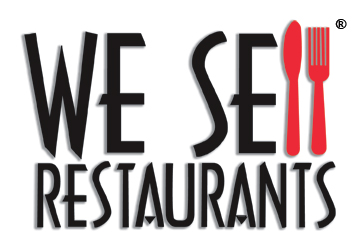
 404-800-6700
404-800-6700
